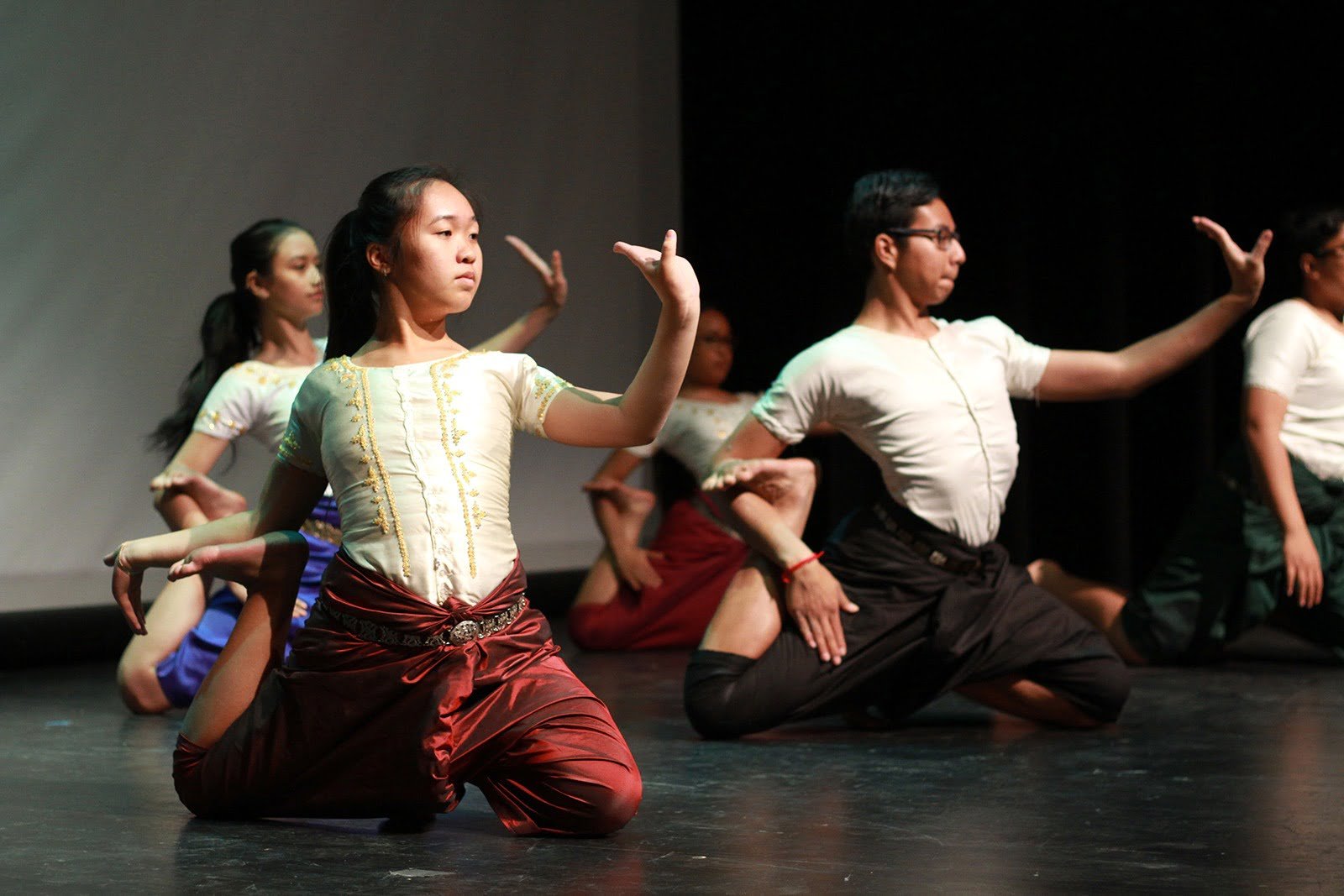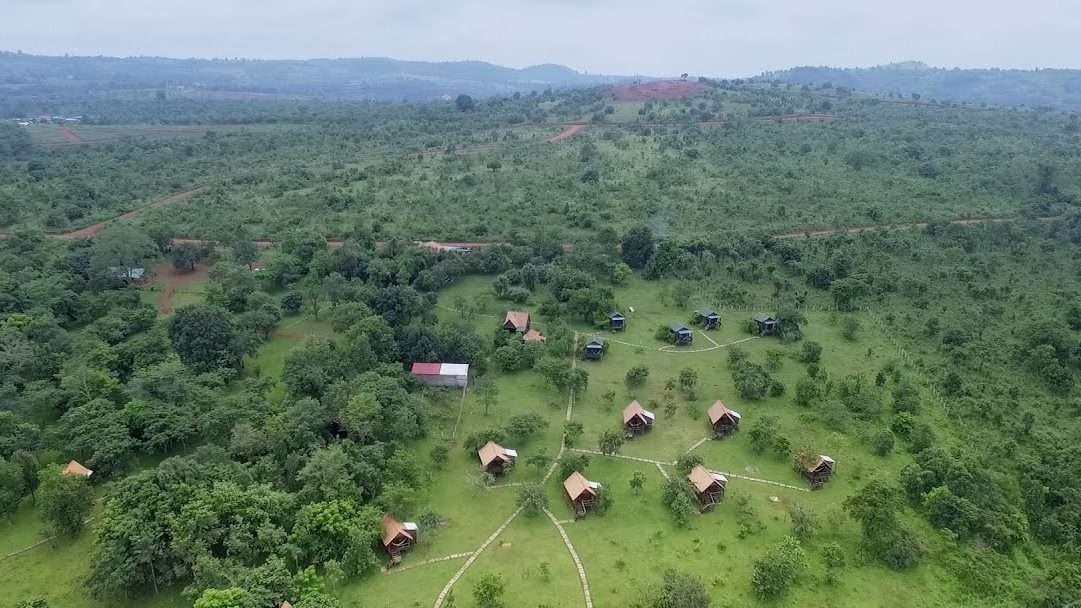Khmer dance is best known for its glittering headdresses, slow, graceful movements, and expressive hand gestures. The hand shapes, along with movements of the feet and arms, help convey the story of the largely silent dances. This is a form of artistic sign language. These hand movements come from Indian “mudras,” which are like hand gestures. In addition to the positioning of the fingers, the movements of the wrists can also convey different meanings.
In Khmer classical dance, there are over 1,500 different hand gestures. A dancer needs more than five years to learn all of them, and it takes roughly two hours for them to show all of the hand gestures in a sequence.
In classical dance, the meaning of a gesture can change based on its placement as well as its movement. The “jeeb” is a hand position made by pressing the thumb and forefinger together and spreading the fingers out. When the “jeeb” is placed on the mouth, it can mean to be shy, to swim, or to laugh, among other meanings.
The jeeb is such an important part of Khmer dance that it was added to UNESCO’s Representative List of Intangible Cultural Heritage of Humanity in 2008, along with the Royal Ballet of Cambodia and Khmer shadow theater.
The signals used by female dancers differ from those used by male dancers. When a female dancer cries, she gracefully traces a tear down her cheek, whereas when a male dancer cries, he presses his hand to his forehead.
Other recurring characters include giants and monkeys, each of which has its own unique body language, movements, and gestures. When compared to the gracefulness of the female characters, which is more stately and centered, the movement of monkeys is characterized by a high rate of movement and the use of the entire body.
Some gestures occur in a certain order, like the plant series. It starts with the dancer arching her forefinger, which means “planting.” When the finger curves up like a plant’s shoot, it means “growing.” The thumb and forefinger touch, and the other fingers are bent backwards to show that new leaves are growing on the plant.
Dancers follow the sequence with their hands as it turns into a flower and then a ripe fruit. The series of movements is typical of traditional dance. Even though it tells stories about how the world was made, it has a lot to do with nature, the seasons, and everyday life in rural Cambodia.
Video: Facebook








